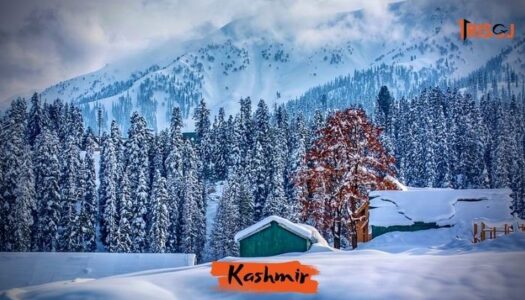Amarnath Temple is an ancient pilgrimage site of India which, throughout all these centuries, has been considered one of the holiest places of worship in India. Located at the height of 3888 m in the Lidder Valley, the location of this spiritual cave is mostly inaccessible, except for The divine strength in the pilgrims themselves which compel them to take on a difficult work or pony ride to the shine of Lord Amarnath. Amarnath Temple is visited by more than seven lakh pilgrims every year. All these pilgrims are not only from India but even from the surrounding nations of Indonesia, Bangladesh, Pakistan and Western Nations like the USA, UK, Canada, Australia etc.
Today we will be discussing everything that devotees must know before starting out on their once-in-a-lifetime Amarnath Yatra – in the form of a detailed Amarnath Yatra Travel Guide. The accurately arranged Guide to Amarnath Yatra can save pilgrims from any unfortunate experience and vastly simplify the preparation for this journey. We welcome our readers to reach out to us about any booking or query on Amarnath Yatra Package or other Pilgrim Kashmir Travel Packages.
About Amarnath Yatra – Why is this Yatra so Important for Hindu Devotees?
Amarnath Yatra has a special significance among Hindu Devotees that no other location or temple can replace. Surrounded on all sides by mysterious, snow-covered Pir Panjal ranges, this cave houses a natural formation of the Amarnath Shivlingam that is made out of ice. Every year, in the initial weeks of Summer, this majestic several-foot-long Ice Shivlingam depicts nothing else but the unusually strong presence of Lord Shiva in every corner of the Himalayas.
The history of Amarnath Yatra and the many legendary stories associated with it give it an even stronger, spiritual meaning. There are many ancient writings that refer to different stories about how the Amarnath Temple came to being. The most widely believed legend has it that after performing the Tandava Dance, Lord Shiva entered the Amarnath cave which was underwater at the time. In fact, the whole of Kashmir was located beneath the water! It is said that it was none other than Rishi Kashyap who made rivers and streams flow all across the state to drain them of water. After Kashmir came out of the water Rishi Bhrigu was able to get the first darshan of Lord Shiva at Amarnath.
It is said that by visiting the Amarnath Temple, one can pray for spiritual and realistic happiness not only in this life but also in the afterlife. All the sins and bad karma are forgiven by Lord Shiva and devotees are welcomed into a life of fulfilment and prosperity. Lord Shiva listens to the plight of all devotees at Amarnath.
Tips for Amarnath Yatra
- Make sure you meet the eligibility requirements for Amarnath Yatra and that you have the medical certificate that deems you fit to conduct this Yatra.
- Amarnath Yatra pilgrims need to register with the authorities at least one to two months before the pilgrimage actually begins.
- Never go on Amarnath Yatra alone and always tie up with a good trekking group and an excellent travel agent who will be able to monitor your progress and also be there in times of crisis.
- If you are feeling unwell on the day of the journey let your team members and supervisor know immediately.
- Prepare for a camping experience.
- According to the rules of the puja, try to party on a vegetarian diet during this journey if possible and do not try to fast unless you feel your body will allow it during the exhausting walk that you have to take.
- Don’t forget to get professional guidance from tourist agents in your locality as well as the local agents in Kashmir who will be able to warn you of all the situations that other people are unaware of.
Where is Amarnath Temple?
The Amarnath Temple is located in the Anantnag district of Jammu and Kashmir, one of the holiest locations in India. The Amarnath cave is situated 29 km away from Pelham at a height of 3888 m from the sea level. Because of the secluded and spiritual location of the Amarnath Temple, it cannot be accessed directly by car or vehicle. A steep and challenging walk takes pilgrims to this ancient and rustically gorgeous location surrounded by high-rising Rocky Mountains and all sides. From Srinagar, the Amarnath cave is 141 km away.
When does the Amarnath Yatra start?
Usually, Amarnath Yatra starts somewhere around the end of June or the beginning of July and continues for around 45 days. This means that the Yatra will stretch into the end of August or the beginning of September. It is ideal to make the Yatra in the summer months if possible as the weather is warmer and drier in the summers.
The starting of the Amarnath Yatra depends on a number of factors – the melting of snow, landslides and overall safety of roads, religious directions etc.
How to reach Amarnath Temple?
- Baltal Valley to Amarnath: Baltal Valley is a picture-perfect valley near Pahalgam. It is not a very popular tourist destination though there are a lot of things to see here. Baltal is often considered to be the best route for Amarnath Yatra although the trekking journey is much more challenging and can only be done by those who have an extremely fit body and prior knowledge of trekking. The time taken to reach Amarnath from Baltal Valley is less than that of Pahalgam.
- Pahalgam to Amarnath: Pahalgam is the more popular base camp for the Amarnath Yatra. The duration is long but the road is quite easy. It is also the most famous road because of which you will find a lot of facilities like pony rides, helicopters, food and local shops from where you can purchase souvenirs.
How many Days is The Amarnath Yatra?
This depends on the variable factors that are involved in the Amarnath Yatra. If the crowd is long you will have to spend hours in line. If the road that year is bad again a long time will be taken to reach Amarnath Temple. Most importantly whether you continue the journey from Baltal or Pahalgam will make a difference in how long you have to walk and how much distance you have to travel.
Generally, from Baltal the trek takes 2 to 3 days to complete and from Pahalgam however can take up to 3 to 5 days. When you are calculating the amount of time taken for the Amarnath Yatra, don’t forget to add the time taken to reach Srinagar from your house, and the time taken to reach Pahalgam or Baltal from Srinagar!
Amarnath Yatra Weather Condition
The best time to visit Amarnath is from July to August. There are three kinds of weather that majorly hit the Amarnath region and these are the summer, the monsoon and the winter.
Summer: Snow on the trail up to Amarnath Yatra melts completely and the road is opened up for devotees. This is the ideal time to visit because the Amarnath Shivlingam still stays intact during this time owing to the cold atmosphere of the holy cave. During the pilgrimage season, the road to Amarnath cave is quite safe and large crowds of pilgrims help each other make the journey. The weather is chilly and cold winds blow constantly even during the summer season. The sunlight is not that harsh. Pilgrims are expected to carry multiple layers of woollen clothing and one layer of water-resistant clothing in case it is required. Umbrellas with a strap around the chin are preferred. They must also carry a woollen cap as the top of the head is really affected due to the cold weather.
Monsoon: While rain in the pilgrimage season is not that common, monsoon does start here in August. Small landslides and wet spots can make walking risky. The Baltal region trail is affected the most and as the rains get more frequent, the pilgrimage is closed to protect the devotees from any harm. The temperature really falls after a while and streams start overflowing. Some valleys do get flooded in the Anantnag region too. The scenic beauty of Pahalgam is maximum during monsoon. In case the Yatra months stretch into August, you might expect to see lots of damp and cold showers. It is important to remember that there is a lot of rain in the summers as well the Amarnath cave and surrounding areas are prone to rainfall all throughout the year!
Things to Carry on Amarnath Yatra
- Trekking shoes
- Warm clothes and a raincoat
- Umbrella
- All the generic medications that you might need along with special medications that are recommended for high-altitude areas
- Powerbank, charger, headphones
- Mosquito repellent
- Thermos flask
- First Aid kit
- Sunscreen, moisturizer, lip gloss, body lotion
- Always carry cash as ATMs or Internet payment may not be available in certain areas of Kashmir.
- Individual items like hearing aids, spectacles etc. that you always need
- Air pillow
- Blankets
- Extra gloves and socks. If possible try to take gloves that are water-resistant.
Eligibility and Fitness – Who Can Travel to Amarnath?
Amarnath Temple welcomes all devotees regardless of gender, socio-economic status or regional differences. However, to maintain the safety and security of all devotees, some criteria have been set. Some age groups and medically conditioned patients have been restricted from visiting Amarnath Temple.
- Children below the age of 13
- Elderly above the age of 65
- Women 6 weeks pregnant or more
- Visitors with any medical symptoms or conditions
Frequently Asked Questions?
A. If you start from Pahalgam, you will be covering 46 km during your Amarnath Yatra and if you start from the Baltal Valley, you will be covering 14 km. However, the journey from Baltal is much more complex even though the distance is less.
A. If you are walking to Amarnath cave from the base point, the Yatra is basically free. For pony rides, 4200 INR is charged for each person. Helicopter rides charge 12000 INR.
A. The highest point of the Amarnath Yatra journey lies 5186 m above sea level.
Conclusion
In this comprehensive travel guide, we have discussed the history of the Amarnath Temple and Yatra, which is the best time for Amarnath Yatra, where is Amarnath and how to reach the destination Amarnath cave. It is crucial to take into account what an exhausting and challenging journey the Amarnath Yatra can be, even for physically fit individuals if they happen to have little experience with mountain trekking. Carrying the right medication, clothing, food etc. is vital for a safe trip. The needs of every particular family member or friend must be taken into account – do not hesitate to contact our experienced travel agent for a customized pilgrimage Kashmir travel package!








